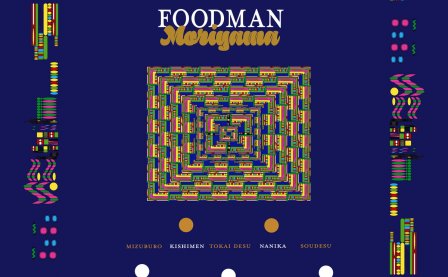There is no better way of experiencing live music than physically seeing the artist play in front of you. The closer you are, the more impressive it is. The more you can see, the more powerful the performance feels, and each sound resonates deeper as a consequence.
That was a perception, a notion I understood to be true because I had lived it many times over — it was always going to be the case. Even while clinching a crazed devotion to certain live recordings, a persistent question continued to bubble away under the surface: what must the performance have physically felt like?
Two months ago I found myself in an internet chat room. It was late and I was hazy from having woken up at 3 AM to “be there.” SPF420, a virtual live music platform, was hosting its Japanese footwork event, which featured Giant Claw, FOODMAN, and Paisley Parks. My level of expectation was minimal; without being surrounded by others in the unrestrained frenzy of a mosh pit or sitting cramped around circular tables in a dimly-lit café, very little could have convinced me that cyberspace was going to offer such a refreshing experience.
FOODMAN was the only artist to perform with a studio weblink, which meant that his actions were crystal clear as he rallied his machines into action. The broadcast was free of effects, providing an up-close-and-personal portrayal of an extraordinarily inventive electronic musician, and despite my deeply grounded perception concerning the importance of physical presence, FOODMAN’s show shifted my point of view entirely — and that’s an incredible feeling in itself.
Shokuhin Maturi, a.k.a. FOODMAN, released his debut effort in late 2012 through Orange Milk, which made his appearance alongside Giant Claw at SPF420 far less coincidental. Shokuhin is a fascinating cassette; it warps evolving footwork tropes in a way that’s truly undanceable, yet totally appealing, and it was the album’s peculiar approach that primed the live scene. Maturi sat amid his equipment in a bright room, as an apparently global gathering of SPF onlookers tuned in and shared their comments in the chat section. Can atmosphere really exist on an online platform? It’s hard to say, but there was definitely a sense of communal appreciation, as snappy output bounced about the screen to the spiraling glitches and combobulous beat patterns the Japanese artist put forward. FOODMAN’s music played perfectly into that virtual setting: a space void of physical contact but still teeming with activity.
「IROIRO」 is more polished and calculated than the album that came before it. It’s a beat picnic of disjointed footwork percussion and abstract synths — fragments that are experimental not in their conception, but in their deliberate lack of coherence. Each tone has been displaced from the context of a sequence or a structure but complements the footwork and juke predilections set out on Shokuhin. Motifs occur accidentally as a byproduct of inquisitiveness from the artist and, with a generous stretch of imagination, on the part of the listener too. They build unexpectedly, like the chugging of a steam train in motion or the continual rumbling of thunder — encountering any form in these sounds is akin to hearing voices in the wind or seeing a human face on a bank of sand; it’s completely subjective and reassuringly unanticipated.
Footwork lives within 「IROIRO」 through effects that give the style its abstract traits. It’s a risky business pulling fractured components from a breed of dance music that’s already renowned for manipulating time signatures and adopting odd sequences, but FOODMAN pulls it off in such a way that entire sections are recognizable from the larger musical backgrounds from which they are borrowed. Rickety hi-hats, rapid snares, and staggered vocal flashes are all present here, particularly on tracks such as “TEKUNO,” “an clair,” and the brilliant “jun sai,” all of which brand the artist even more distinctly with the musical identity he is constructing. Any consistent rhythm or melody found within these songs exists as a mirror to the very expectations FOODMAN sets about displacing: What happens when you strew mid-frequency glitch across an electronic pulse, loop it a couple of times, shift the tempo, and then drop the pitch to some distant, breathy drumming (“somen de don!”)? Such curiosity is where the organization lies in FOODMAN’s work, and that’s what makes it such a wonderful listen — it’s apparent, but not immediately discernible.
「IROIRO」 is a finer, more pronounced exploration of FOODMAN’s self-styled aesthetic — from the micro synth ripples of “WAVE” to the goofy vocals of “fudan no sikatu” — and although seeing the artist perform live for an online audience was insightful, it certainly isn’t vital in finding an entry point to his music. As the comments streamed to the frantic burbling of his show that night, Maturi demonstrated what it was like for him to be in the throes of his own sound, without indicating a shred of shyness or mystery as to how each piece was technically assembled. Witnessing this alongside people I couldn’t see or hear, for the most part, only added to the allure of the encounter, and the feeling of unison and unfiltered communication within that virtual setting really punctuated the artist’s angle. It’s no surprise that FOODMAN felt at home in this context; his music sounds as though it has been purposefully built for it, and on 「IROIRO」, he emphasizes the importance of a human connection, virtual or otherwise; it really doesn’t matter.
More about: 食品まつり a.k.a foodman




